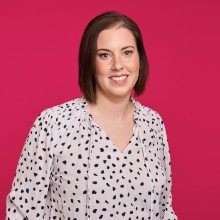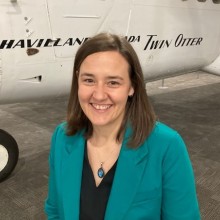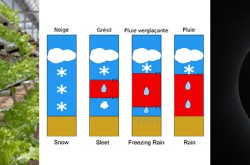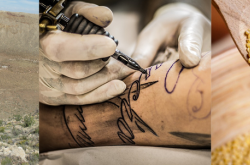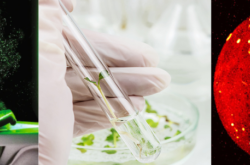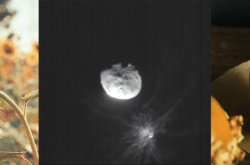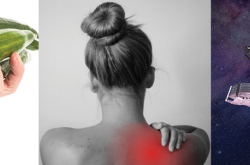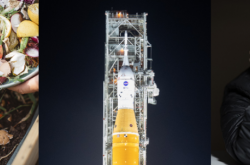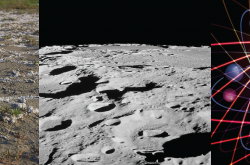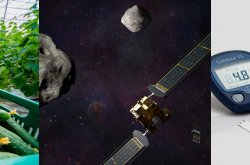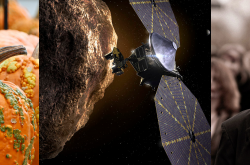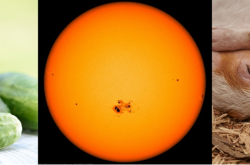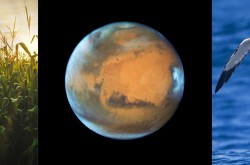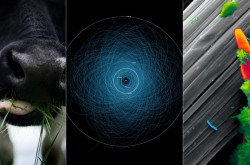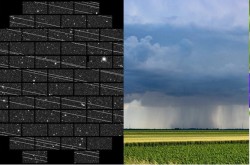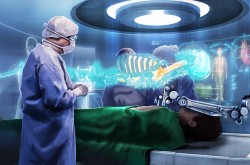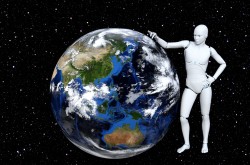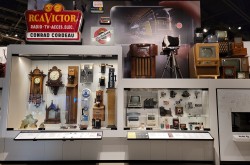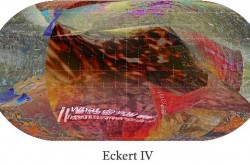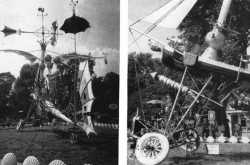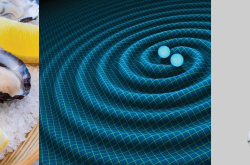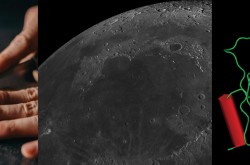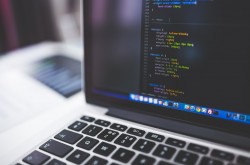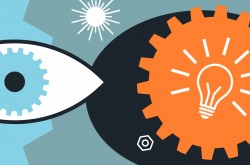Women in AI & Robotics: An interview with Founder and CEO, Sheila Beladinejad

Artificial Intelligence (AI) is the development of a computer or machine able to complete tasks and make decisions based on datasets that would normally require human intelligence. The technology has a huge range of potential applications, from human speech recognition software like Apple’s Siri, to computers capable of processing mass amounts of data in a short amount of time, such as classifying thousands of satellite images.
As with many technology-related fields, there is a disparity of women working in AI & Robotics.

Sheila Beladinejad, Founder and CEO of Women in AI & Robotics
In the December edition of Ingenium’s Curiosity on Stage, we explored the topic of “AI and Robotics for Social Good ”, with special guests Sheila Beladinejad, Founder and CEO of Women in AI & Robotics, and Taryn Tomlinson, Director, Sun-Earth System Sciences at the Canadian Space Agency. We recently asked Sheila to tell us more about the incredible work unfolding at Women in AI & Robotics. Be sure to check out the summary video at the bottom of the article.
Ingenium Channel (IC): What is Women in AI & Robotics; what does this network hope to achieve?
Sheila Beladinejad (SB): There are currently less than 30% of women in Artificial Intelligence and even much lower in Robotics. In fact, we don’t know the accurate count for women in robotics since it is not being tracked officially. As a result of this disparity, women's viewpoints and perspectives don’t play an equal role in innovation, designing and building solutions in these fields.
If the people working on artificial intelligence tools, products, and services don't resemble society from a gender, ethnicity, and abilities perspective, then their innovation will not have a positive impact on society, and there will always be an imbalance.
~Sheila Beladinejad
Women in AI & Robotics is a German/ Canadian association with a global presence dedicated to advancing women in the fields of artificial intelligence and robotics.
Our mission is to close the gender gap in AI & Robotics and increase female representation and participation through advocacy, mentorship, education, hackathons, and accelerator programs. We work towards gender-inclusive, ethical, and responsible solutions that benefit everyone in our society. Our goal is to amplify voices and talent worldwide in a supportive network.
We envision a cross-national collaboration that allows women to network with scientists, researchers, industry leads, and role models worldwide.
We are official partners with UN Women, commitment makers of Generation Equality and have a formal collaboration partnership with Deutsches Forschungszentrum für Künstliche Intelligenz (DFKI), the German Research Center for Artificial Intelligence. We have also received in-kind support from the aerospace industry, including the German Aerospace Center and Canadian Space Agency.

Networking event in Toronto, July 2022
IC: What is your role and approach towards that objective (mission)?
SB: Artificial Intelligence & Robotics can solve world problems, and there is a global talent shortage. Attracting and retaining more women in these fields will maximize innovation, creativity, and competitiveness.
To get more women into AI & Robotics, we need to understand what’s holding them back. I think the reasons for not having an equal presence in these fields are threefold. Having worked with many women across different tech roles and organizational levels, I see 3 types of barriers:
- Societal Biases - how we raise girls at home and school and the stereotypical roles that oftentimes unconsciously influence girls’ upbringing. Society’s deep-rooted biases impact the expectations of teachers and parents. This perception can be directly and indirectly conveyed to girls, moulding their interest in STEM topics and their expectations of themselves.
- Systemic barriers - equal opportunity and equal pay are desired in every country and not yet fully achieved anywhere. Additionally, women are still primary caregivers of children and the elderly, which pose a conflict with their educational and career aspirations.
- Support system – the lack of a nurturing network of support for women where they can safely seek information, providing them with mentorship, role models, educational programs, and guidance to attract women into these fields and help retain them.
Gender equality in all aspects of life is an urgent matter. Studies and research by organizations such as the World Economic Forum indicate we are 100s of years away from reaching it.

Women in AI and Robotics at a Montreal Launch Event, July 2022
We initially started our association of Women in AI & Robotics with a focus on the support system, a ‘symptom’ of gender inequality in Artificial Intelligence and Robotics, but we soon realized it was not enough; we must also address the ‘root cause’ of the gender equality issue in parallel if we want to expedite the slow progress.
As a result, we are now engaged in addressing all types of barriers to entry, societal biases, systemic barriers, and support systems. This tall order cannot be accomplished alone, so we highly appreciate collaborations and partnerships with other non-profits on a similar mission to amplify our impact and reach. Our approach is to:
- Help parents and teachers demystify math and technology; women belong in all STEM professions. We are working with school districts by providing role models to present their work at schools.
- We advocate for equal pay, improved care programs and leave of absence for any family member to provide childcare or elderly care by engaging with our local government organizations, giving talks and interviews, publishing articles on the topic and encouraging companies to provide transparency in their initiatives to address the gender gap such as their metrics, pay rate and DEI initiatives.
- We have built a network of 800+ members and rapidly growing globally. Our members are professors, researchers, industry experts and students offering various programs to support them on their learning and careering journey.

Two founding members of Women in AI and Robotics, Lioba Suchenwirth and Sheila Beladinejad posing with Justine the Robot at Automatica, Munich, June 2022
IC: What programs and events are currently available to Canadians, and where can they sign up?
SB: All programs we offer are currently available to Canadians. We offer educational workshops, mentorship, CV workshop, career advice, startup accelerator, hackathons, and partner-supported educational programs. We have recently formed a Youth program specifically targeting 15-24-year-olds in our community and working towards further engaging the Youth in our UN Women partnership-related activities.
Taryn (Women in AI & Robotics advisor from the Canadian Space Agency) and I just wrapped up a global robotics hackathon called RoboArt in collaboration with the University of Waterloo, Department of Mechanical and Mechatronics Engineering and Mila, Quebec AI.
We targeted entry-level curious minds and received 100+ registrations for participation. It was pretty successful and fulfilled our mission of sparking women's interest in robotics.
The team's artwork was quite creative, and we had a lot of fun together. We intend to do this again in 2023, so please stay tuned for future announcements.
As for joining our community, it is free and can easily be done by signing the membership form on our website. We encourage everyone to follow our social media platforms and subscribe to our newsletters so they don’t miss our latest news, events, hackathons and programs.
IC: What is the importance of mentorship for women in AI & Robotics?
SB: Mentoring can be life-changing and fosters lasting relationships between mentees and mentors. It boosts confidence and empowers the mentee, increasing the prospect of them being successful in their studies or career. It also helps build a sense of community. As a mentor, I think it’s a privilege to be in a position to share our own experience with someone and help them overcome their challenges, whether it’s on a personal, academic or professional level. It’s also gratifying to be the first person they contact when they ace an interview, receive recognition at work or do well in their studies.
IC: After a solid year's work, what has the network accomplished so far? What's in store for the future?
SB: We were established in February 2021. Since then, we have launched chapters in Munich, Berlin, Bremen, Stuttgart, Toronto, Waterloo, Vancouver, and Montreal, with plans for opening chapters in Ottawa and other cities throughout Canada, Germany, and other countries worldwide.
We made this 3-minute video to celebrate our first anniversary of becoming partners with UN Women, which captures our accomplishments well.
In 2023, we aim to build and strengthen our partnerships with educational institutions, further promoting AI & Robotics in schools and Universities. We also look forward to working more closely with government-affiliated institutions on a similar mission.
Transcript
|
Audio |
Video |
|
[upbeat music plays] |
The Women in AI & Robotics logo steadily grows in size
Text on screen: a non-profit organization |
|
|
Simple cartoon of a humanoid robot and a woman are dancing side by side. The woman is wearing red pants and has a blue pony tail.
Text on screen: On a mission to close the gender gap in artificial intelligence & robotics |
|
|
Text on screen: To increase female representation and participation through mentorship, education, hackathons, accelerator programs
Above the word ‘mentorship’ is a graphic of two people talking to each other. Above the word ‘education’ is a graphic of two textbooks and a graduation cap. Above the word ‘hackathons’ is a graphic of a calendar with a star over a date. Above the words ‘accelerator programs’ is a graphic of a rocket ship. The icons take turns becoming bigger and brighter. |
|
|
Text on screen: We work towards gender-inclusive, ethical, and responsible solutions that benefit society.
A graphic of the Earth is overlaid by three speech bubbles. Two read “#ActForEqual” and the third reads “#GenerationEquality”
|
|
|
Text on screen: “If the people working on artificial intelligence tools, products, and services don’t resemble society (gender, ethnicity, and abilities) then their innovation will not have a positive impact and there will always be an imbalance” – S.B. |
|
|
Text on screen: Now celebrating our 1st year |
|
|
A wheel made up of multiple colorful segments appears spinning on screen. A red segment grows and the rest of the wheel disappears. Inside the red segment is a symbol for gender equality and the text “5 – gender equality” |
|
|
Text on screen: 1 year driving action for gender equality. 1 year of generation equality. As a proud commitment maker for gender equality”. |
|
|
A hand with red fingernails holds a cell phone and swipes between two pages reading “patriarchy” and “equality”
Text on screen: Together, we… became a UN women coalition partner. |
|
|
A spinning 8-bit graphic of a rocketship with a rainbow coming out of the back.
Text on screen: Conducted a 17 week-long artificial intelligence startup accelerator program with 40 women. |
|
|
Graphics of several resumes and screenshot of a webpage showing several available courses and workshop options.
Text on screen: Published our “Did you know?” series & organized CV/resume workshops |
|
|
Text on screen: Invited 50 speakers
A series of screenshots showing hosted speakers and their topics appears. |
|
|
Text on screen: Hosted 33 events & workshops
A graphic of a laptop computer. On screen is a virtual meeting with five speakers and a slide that reads “Universal access to information, AI, Robotics & a Femanist Perspective. International Day of Women & Girls in Science.” with the United Nations and UNESCO logos.
The slide on the laptop screen transitions into a slide titled “AI can be an opportunity for women”
The slide on the laptop screen transitions into a slide titled “Ask a scientist. 8th March. Institute of Robotics and Mechatronics welcome Women in AI & Robotics” with the Women in AI & Robotics logo.
The slide on the laptop screen transitions into a slide titled “Software Development in Industrial Automation. Community internal workshop” with the Women in AI & Robotics logo.
The slide on the laptop screen transitions into a slide titled “Robotics Hackathon. For whom? Girls between 16 to 25 years. What should you know? Basic knowledge of Math, Programming and English. By Robotics innovation center Bremen and Zoom” with the Women in AI & Robotics logo. |
|
|
Text on screen: Organized our first hackathon
A computer screen shows a coding program in action, with a digital robot following a multicolored pathway. |
|
|
Text on screen: Held and attended various onsite events
Outlines of Canada and Germany appear.
Screen shots of several events appear followed by the location they were held in. These include events in Berlin, Hannover, Amsterdam, Munich, Stuttgart, Toronto, Montreal.
Text on screen: We have local chapters in Germany and Canada.
The maps reappear with the locations of local chapters geotagged: in Canada there is Montreal, Toronto, and Waterloo; in Germany there is Berlin, Bremen, Stuttgart, and Munich.
Photos appear of women from these local chapters. |
|
|
Text on screen: Our President, Sheila received the honorary award from the German Canadian Society for her efforts in further promoting and strengthening the scientific collaborations between the two countries.
A photo of Sheila Beladinejad holding her award and a bouquet of flowers with the German and Canadian flags.
A new photo appears of Sheila standing next to the Honourable Stéphane Dion, Ambassador of Canada to Germany. |
|
|
A graphic of the Earth spins
Text on screen: Growing our community worldwide – we are now on every continent. |
|
|
Text on screen: 750+ members and 30+ volunteers
In the background are headshots of some of the members. As the text disappears, the photographs become bright and clear. |
|
|
Text on screen: Developed 42 partnerships and gained 8 advisors from industry and academia. |
|
|
Text on screen: Special thanks to our formal partners
Logos for the three formal partners
|
|
|
Text on screen: and our collaboration partners
Logos for the collaboration partners:
|
|
|
Text on screen: Thank you to all our volunteers, board members, advisors, community members, and supporters! You have played an important part in our success.
A woman wearing a hijab, headphones, and a backpack holds up a sign saying “Tech and innovation for gender equality” and an iPad with the gender equality symbol. |
|
|
A comic of a woman and a man are on the starting line for a racetrack. Between the man and the finish line are two hurdles. Between the woman and the finish line are land mines, barbed wire, a pool with a crocodile, a brick wall, and a barricade. She also has a ball and chain attached to her ankle.
Text on screen: What’s the matter? It’s the same distance!” |
|
|
A circular ‘loading’ animation is superimposed on the symbol for woman.
Text on screen: Progress to remove barriers is too slow. Let’s join forces to expedite it. |
|
|
Text on screen: Join us and gain access to…
|
|
|
Text on screen: … or partner with us
|
|
|
The women in AI & Robotics logo appears
Text on screen: Together, stronger! |



